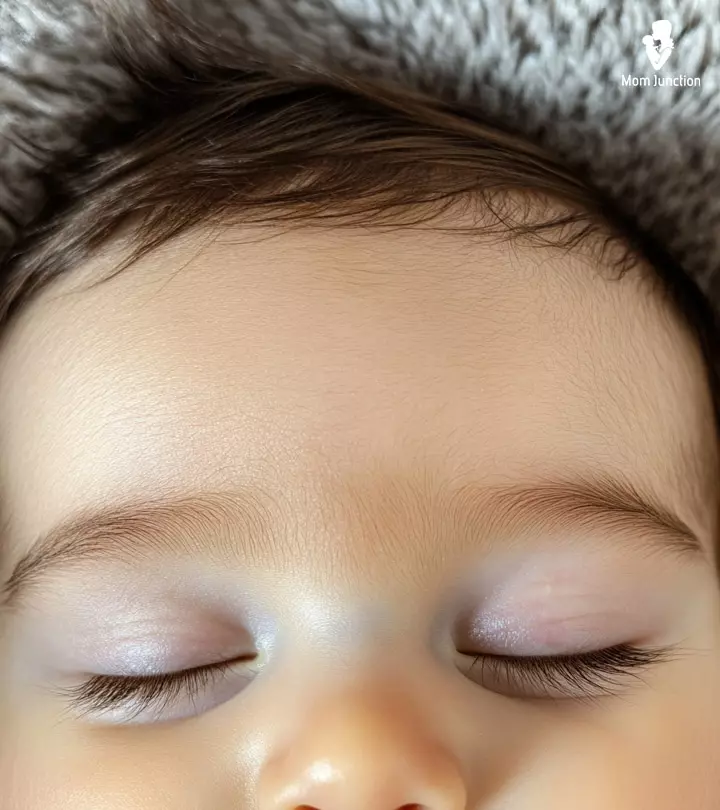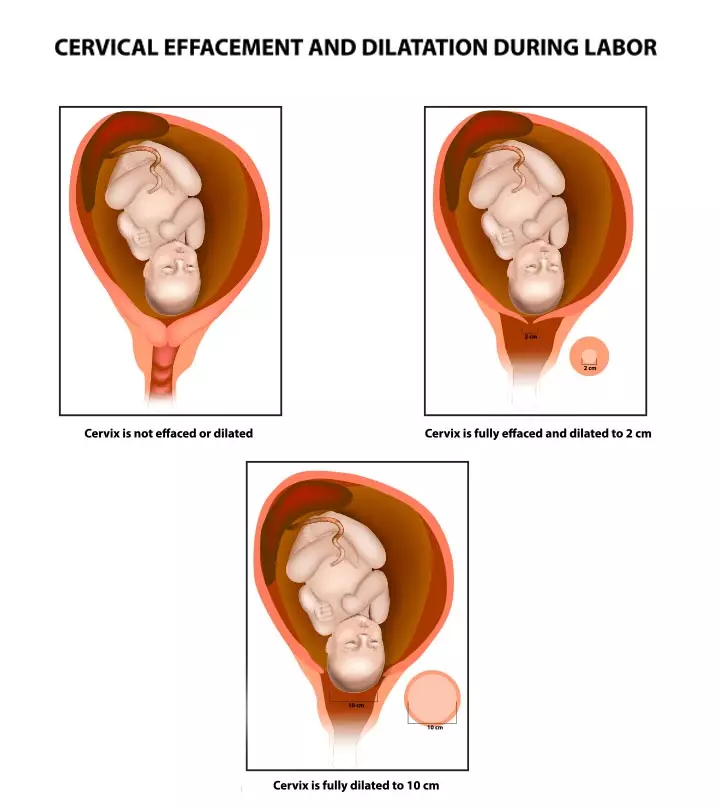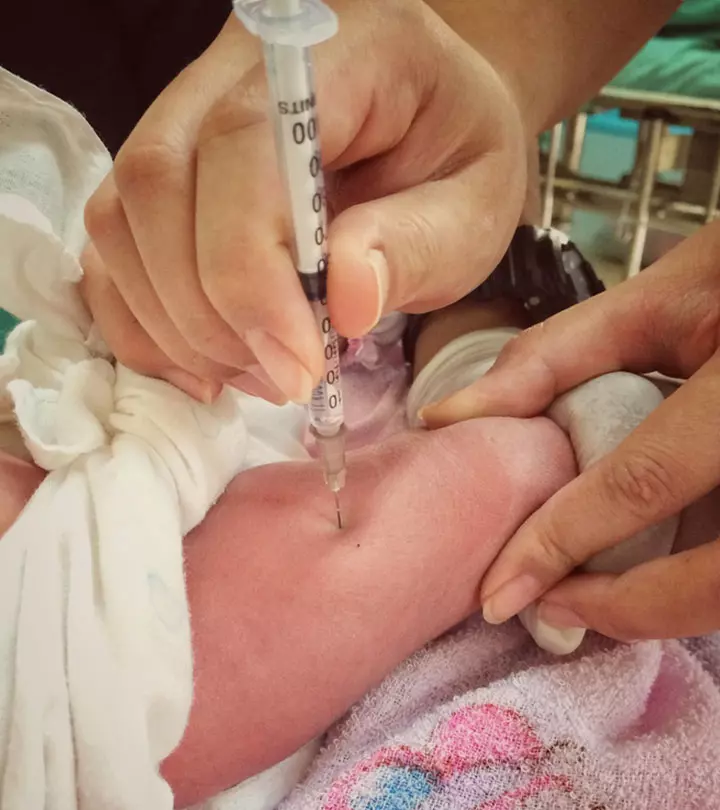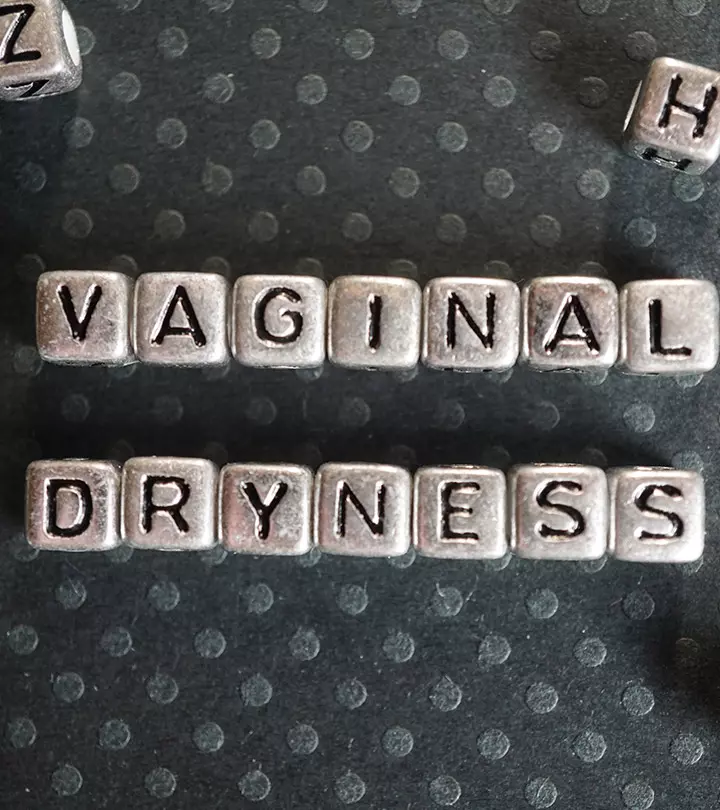
Image: Midjourney/ MomJunction Design Team
What is a sugar bug vein? You may observe that certain veins are quite prominent on some babies’ foreheads and noses. These veins are referred to as ‘sugar bug veins,’ and babies as sugar bug babies. Although their appearance is considered completely normal, it may create concerns in some parents.

Read on to learn about sugar bug babies, including whether they will disappear and if the condition is normal or abnormal.
Key Pointers
- The exact cause of the sugar bug vein is not identified. However, it is prominent in babies with fair or thin skin.
- Traditional medical practices recommend avoiding certain food items such as sugar and eating only fresh food.
- Changes in sugar bug veins such as a throbbing vein, swelling, and the presence of scars should be evaluated by a pediatrician.
Is Sugar Bug Vein Normal?
It is entirely normal for babies to have sugar bug veins.
Although we all have veins, some veins are more evident in babies. There are various theories about sugar bug veins. Traditional Japanese medicine believes that sugar bug veins indicate a syndrome called “kanmushi”, which causes a weakened immune system, sugar sensitivity, and irritability in children.
Some other theories claim that sugar bug veins signify mutations in the MTHFR gene, a condition that might cause health problems. However, there is no scientific evidence to support these claims. Since there is no conclusive evidence, we can say sugar bug veins are not a cause for concern.
 Did you know?
Did you know?What Does It Look Like?

Sugar bug veins are usually blue. They are about 1.5-2mm thick and usually appear on the bridge of the child’s nose or between the eyes.
Ashley Linn, a mother of three, had been unaware of her daughter’s sugar bug. She shares, “At her birth, my very knowledgeable lay midwife said that the blue spot was probably a bruise from the birth canal and that it would fade and disappear. I soon realized it wasn’t going away, and I have since considered it normal. Apparently, my daughter was born with a ‘Kanmushi,’ as it is referred to in Chinese medicine, otherwise known as a sugar bug, which is indicated by the bright blue vein exposed on the bridge of her nose (i).”
What Are The Causes Of Sugar Bug In Babies?
The cause of sugar bug veins is not known.
There is no scientific evidence to prove why sugar bug veins appear in some babies. However, here are a few characteristics that may make sugar bug veins more noticeable in babies.
- Fair skin: The veins of babies with fair skin are more prominent.

- The thickness of the skin: Babies usually have thin and delicate skin. Some babies’ skin may be more transparent than others, allowing light to pass through more easily. These factors make sugar bug veins more visible.
- Size of the veins: The size of the baby’s veins might also impact the visibility of sugar bug veins.
 Quick fact
Quick factWhat Are Some Foods To Avoid When Having Sugar Bug Vein?
Although traditional Chinese and Japanese medicines recommend certain foods to avoid for babies with sugar veins, there is no research to prove these claims. However, restrictions on unhealthy foods may be beneficial for babies. Here are a few foods that traditional medicines recommend avoiding.
- Sugar: Sweet-tasting foods that contain added sugar, such as a cookie, candy, cotton candy, and cakes. You should also monitor the intake of foods containing natural sugars, such as fruits, honey, and maple syrup for babies. You should limit the consumption of carbohydrate-rich food.

- Cold food: Cold foods, such as ice creams, may cause nasal congestion and cough. Therefore, Chinese medicine recommends restrictions on cold foods.
- Salty foods: Canned foods, processed meats, and frozen foods may be high in sodium. You should also avoid store-bought foods high in salt.
- Fish high in mercury: Some fish such as king mackerel, tuna, shark, and swordfish have high mercury levels. It is recommended to avoid giving such foods to babies as their mercury intake should be limited.
- Unpasteurized foods: Unpasteurized foods such as juice, milk, and cheese may cause severe bacterial infections in babies. CDC recommends avoiding unpasteurized foods for babies.
- Drinks high in sugar: Any drink sweetened artificially by sugar including packaged juices and soda may be harmful for babies. Avoid such sugary drinks.
- Cow’s milk: Cow’s milk has complex proteins and minerals that may be harmful to a baby’s digestive system. Moreover, cow’s milk does not contain the right nutrients for a baby (1).
- Caffeinated drinks and juices: The CDC recommends not giving babies all fruit and vegetable juices until they are 12 months old. Moreover, caffeinated drinks are to be avoided until the child is two years old (2).
What Are Some Foods To Include When Having Sugar Bug Vein?

Regardless of whether there are sugar bugs, it is always good to maintain a healthy diet for babies. Traditional medicine recommends providing clean food for babies.
- Fresh food: Give your baby freshly prepared whole food every time.
- Nutritional diet: Traditional medicine recommends a diet rich in essential fatty acids and amino acids.
- Iron-rich foods: Lean meats, beans, lentils, and cereals are rich in iron. Babies should also have a diet rich in green leafy vegetables, breads, and potatoes.
- Protein-rich foods: Meat, beans, eggs, and poultry are some of the best sources of proteins. Babies should be fed these along with dairy products for a balanced protein diet.
- Vitamins and minerals: Babies require several essential vitamins and minerals including vitamins A, D, B6, B12, zinc, choline, and iodine (3).
Note
: Always consult a pediatrician when introducing new foods to ensure they align with your baby’s age-specific nutritional needs.
Can You Give Formula To A Baby With Sugar Bug Vein?
Yes, giving formula milk for your baby with a sugar bug vein is okay. However, it is good to consult the pediatrician before changing the baby’s diet. This way, you can ensure your baby’s nutritional needs are correctly met.
Does A Sugar Bug Go Away?
As the baby grows, the veins of sugar bugs are less visible.
The aging process causes a lot of changes in the face and body. The face and the body grow, fill out, and the skin thickens. During this process, vein drainage may also change. All these changes may make sugar bug veins less evident. Although medical science has yet to conclude why sugar bug veins disappear, they mostly disappear or become less noticeable after the first year.
How To Support A Baby With Sugar Bug Vein?
Besides providing sugar bug babies with a healthy diet, Chinese medicine offers other methods to support babies with sugar bug veins.
All these are excellent ideas for little ones’ health, so implementing these practices will benefit them.
- Create a structured environment: Prepare an appropriate schedule for the baby. Try to fix a time for sleep, bathing, meals, and playtime. Following a timely routine may help your baby make better adjustments and reduce crankiness.
To establish a more organized environment for her daughter, Linn admits, “Truth be told, until this last year or so, I’ve wasted a lot of time being rather unorganized and unscheduled in my parenting, lacking a natural knack for routine myself, and I know it’s affected my daughter. I know we could have avoided a lot of trouble, frustration, and worry had I known about the sugar bug sooner or perhaps had I been more organized.”
- Take cues from the baby’s behavior: Observe the baby’s behavior and act accordingly. Keep track of when the child seems uncomfortable. Put the baby to bed early if the baby gets upset at noon. If the baby appears irritable after consuming specific foods, remove the foods from the diet plan for some time.
- Avoid exposure to excessive stimuli: Excess stimulation can overwhelm the baby. They cannot bear exposure to too many sensations or activities. Over-stimulated babies can be cranky and tired. Therefore, it is best to limit their exposure to loud noises or flashing lights (4). If they seem unsettled by TV sounds or loud music at parties, take them to a quiet place to calm them down. Use soothing sounds or gentle music to calm your baby and reduce discomfort caused by auditory overstimulation.

 Quick tip
Quick tipWhen To Call The Doctor?
Typically, sugar bugs will disappear automatically without medical intervention. However, if you notice the following symptoms, you should seek medical advice immediately.
- A strange lump
- Presence of dents, scars, or a bunch of hair on the bridge of the baby’s nose
- Any swelling or uneven appearance of the skin in the area
- The throbbing of the vein
- Blue-purple swelling or any other color change around the nose
Sometimes blue-purple swelling may indicate the presence of hemangioma, a birthmark made of extra blood vessels and is benign. Although most of them disappear without medical treatment, some may cause scars, sores, infections, or difficulties in breathing, seeing, or eating, depending on the location (5). Therefore, it is advisable to consult a doctor.
Sugar bug babies have a bluish line commonly called a sugar bug on their bodies. Although harmless in most cases, it is natural to be concerned about your baby. So be rest assured that the appearance of such a line does not essentially pose any threat to your baby and will disappear as your baby grows without requiring any medical intervention. You may support them through it by providing them with a healthy diet, calming them, and preventing them from exposure to loud noises. Avoiding unhealthy foods such as sugary drinks and processed foods may also help. However, if the sugar bug presents with additional symptoms such as scars, pulsating pain, or a lump, consult your child’s doctor as it may indicate an underlying condition.
Frequently Asked Questions
1. Is massaging the blue vein between a baby’s eyes safe?
There is no scientific evidence that reports the safety or lack of it in massaging the blue vein between a baby’s eyes.
2. Can the blue vein between a baby’s eyes signify a birth injury or trauma?
The blue vein between a baby’s eyes is normal in most infants and is not generally associated with a birth injury or trauma.
3. Can the blue vein between a baby’s eyes indicate a congenital condition?
A blue vein is usually not associated with any congenital condition. If your baby has a blue vein between the eyes and shows signs of a problem, consult a doctor.
4. Can the blue vein between a baby’s eyes cause discomfort or pain?
The blue vein between a baby’s eyes is not typically associated with discomfort or pain. However, seek medical advice if the vein is swollen, red, or tender to the touch.
Infographic: More Details On Sugar Bug Babies
Sugar bug veins in babies might sound harmful, but it is normal. However, you may need to take specific precautions to avoid any potential future complications. This infographic provides more information about the conspicuous sugar bug vein between the baby’s eyes.
Some thing wrong with infographic shortcode. please verify shortcode syntax
Personal Experience: Source
MomJunction articles include first-hand experiences to provide you with better insights through real-life narratives. Here are the sources of personal accounts referenced in this article.
i. Sugar bug! The mysterious vein on your child’s nose;https://holisticgirls.wordpress.com/2014/12/15/sugar-bug-the-mysterious-vein-on-your-childs-nose/
References
1. Cow’s Milk and Milk Alternatives; CDC
2. Foods and Drinks to Limit; CDC
3. The crucial brain foods all children need; Harvard Health
4. Overstimulation: babies and children; Raising Children Network
5. Hemangioma; Nationwide Children’s Hospital
6. Common Phototherapy Mistakes & How to Avoid Them; Journal Of The American Osteopathic College Of Dermatology
Community Experiences
Join the conversation and become a part of our nurturing community! Share your stories, experiences, and insights to connect with fellow parents.
Read full bio of Dr. Rana Chanchal
Read full bio of Shivali Karande
Read full bio of Rohit Garoo
Read full bio of Vidya Tadapatri

















